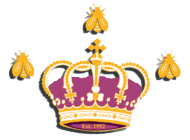It’s a regular Tuesday afternoon in August last year and my phone rings. I prop the phone under my chin to take the call as I continue to mark a queen bee. “The Hive Honey Shop London, how can we help”. The voice on the phone is gruff and to the point. “I am looking to hire some beehives and was told you’re the man”. “Yes we do hire out beekeeping equipment. What is it for?” I ask. “A Miramax film starring Jason Statham, have you heard of him”? I bolt to attention, full of questions, juggling the phone while looking for the queen bee that has escaped in the confusion and now somewhere on me.
So why me? Well let’s back up a bit and allow me to explain. I am James Hamill, a third generation full time professional British beekeeper. My family have been beekeepers since 1924, celebrating our 100th year of working with honeybees. I was taught beekeeping at the age of 5, all my best memories are while working with honeybees. In 1992 I opened The Hive Honey Shop London, the first British high street honey shop devoted to all things bees and honey in south west London. During that time I was juggling running the honey shop, developing my orchard farm apiary and building up my beehive stocks to over 110 hives. To supplement my income I sold beehives, queen bees, did a bit of eco-pest control, rehousing rather than harming.
Then in 1995 I was awarded a Queen Elizabeth Scholarship by the Royal Warrant Holders on behalf of Her Majesty Queen Elizabeth The Queen Mother to study beekeeping and bee disease techniques around the world. I was lucky enough to meet Her Majesty personally at St James’s Palace and I took along my observant bee hive filled with live honeybees. I was told this was a first. With the support of QEST I worked with many small and large commercial bee farming concerns in places such as Italy, St Lucia and California USA, harvesting tons of honey per day and working as many as 3,700 beehives, very different to my small UK honey operation.
In the 1980s I began to work professionally in the film and television industry. Being a professional beekeeper and having a clear understanding of the entertainment industry gave me a very precise skill set and word began to spread. I was asked to arrange scenes involving live bees for commercials, PR events and films. So my experience grew.
I was then contacted by the set designer to arrange a meeting at my bee farm with her, and two others from the film team. The meeting would involve discussions about design, the theme and look of the film with prop hire in mind. We had lots of discussions on the look of different beehives, history of beekeeping, all aspects from bee to jar were covered over the following months.
In the end they essentially took away my entire honey factory. From large extraction gear to tiny hive nails. It was a mad rush to get it all categorised, wrapped and ready for the lorry collection.
My overall involvement in the film grew over time and I found I was working in not one, but several roles from prop supplier, beehive contractor, live bee handler and the films beekeeping consultant.
The most important aspect of my work was providing the live working honey bees on set. Worker bees (Females) have stingers, Drone bees (Males) do not. So a lot of prep work is needed to ensure it will be completely safe for all on the day.
I started by auditioning the honey bees from a core of fifty selected beehives months before they were brought on set. This was no simple task. Through a process of elimination those honey bees showing positive signs to all my tests would make it to the silver screen. One test I do is to rent large lighting rigs and see how bees from each beehive react to the lights. Honey bees that are more attracted to the lights will be a problem on the day. Thus I start my weeding out process. Honey bees that show signs of working early as well as late and actively fly in lower temperatures are chosen. Gentle calm honey bees that are happy with lots of movement around them are selected. The list of tests went on, and over the months I was able to narrowed it down to the remaining three beehive stars.
To bee continued……
